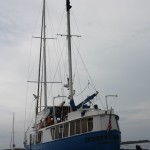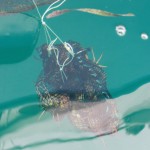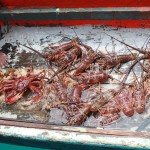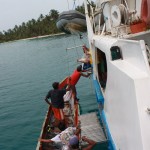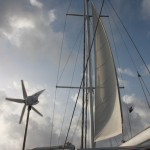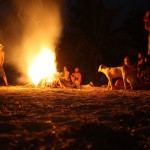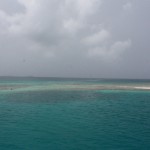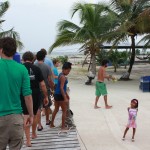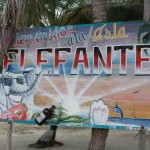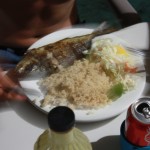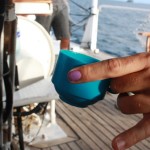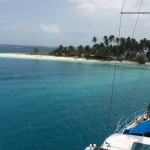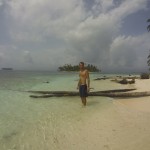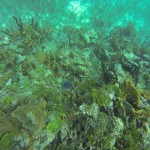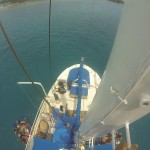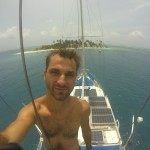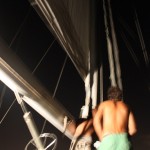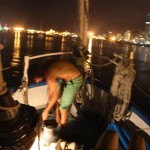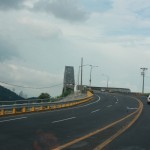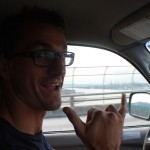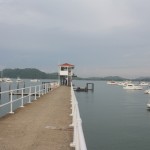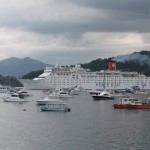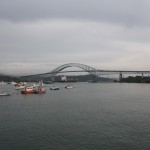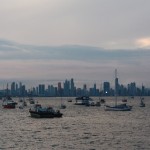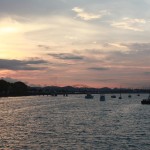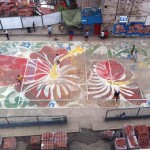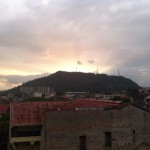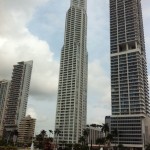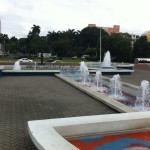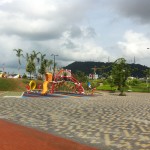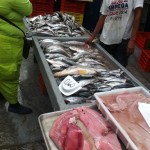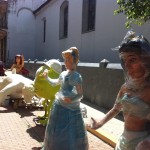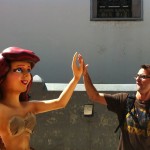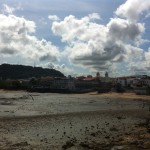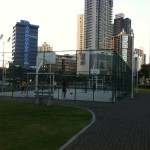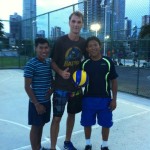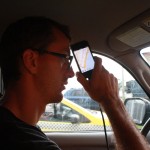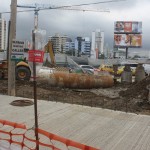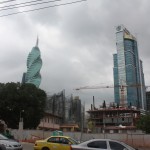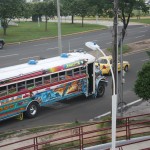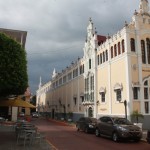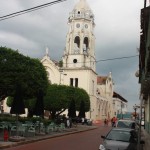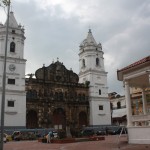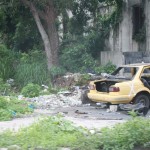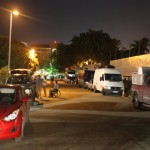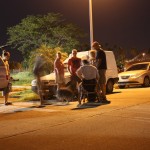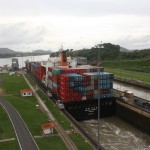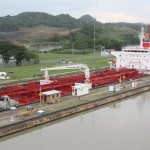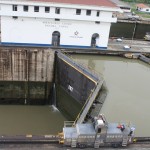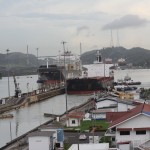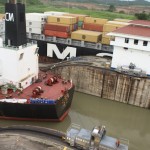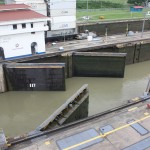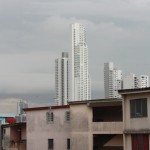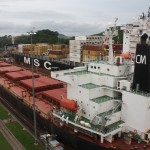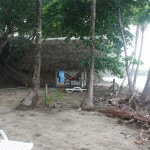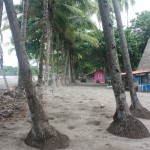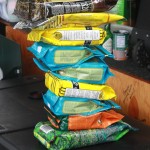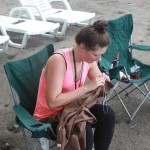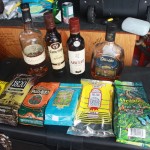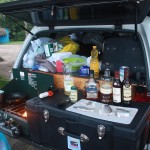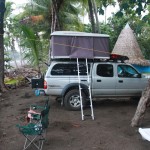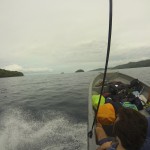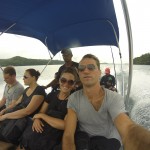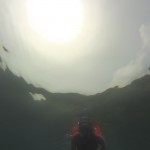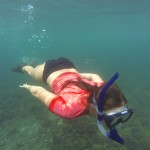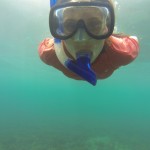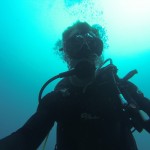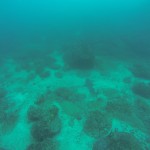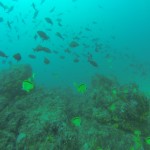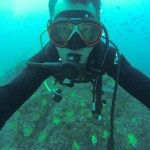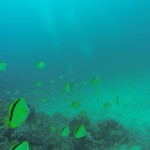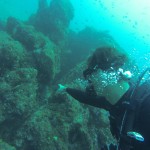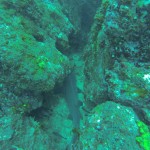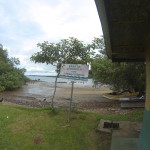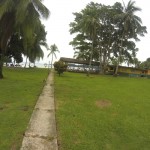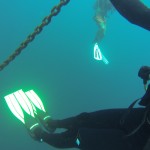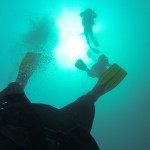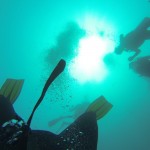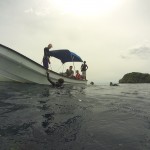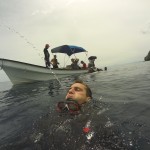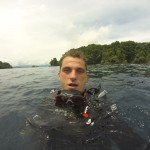Once we got Vida tucked away safe and sound in a shipping container on Thursday, it was time to get ourselves from Panama City to Cartagena, Colombia. Of course we opted for a sailboat with George being the sailor he is and me being a wannabe sailor who is determined to nip her chronic seasickness in the bud. Our shipping partner Eric (www.trans-americas.com) worked some magic and managed to get us on the 85 foot (18 meters) Independence sailboat on Friday morning (originally the Independence was set to leave on Thursday). We would sail through the San Blas islands populated by the native Kuna people. Incidentally, the Kuna won independence from Panama in 1925 to govern themselves. They are ranked as some of the happiest people in the world and have managed to find a balance between maintaining their traditional ways and supporting their people through entrepreneurial efforts.
A jeep picked us up at 5:30 am on Friday morning from a hostel in Panama City. We would drive to Carti, a very small port on the Caribbean Sea and from there take a water taxi out to the Independence. We had heard the road out to Carti was terrible, but it turned out to be a much shorter ride than we were anticipating. They didn’t spare us from some carsickness on the windy steep road though. Soon enough we were off weaving through the river and then out into the open water to hop aboard. After the anxiety of shipping the car, we were all ready to kick up our feet and relax.
Being a large boat, the Independence had ample room to whittle your hours. The captain was a character, which seems like a job requirement to be a sailboat captain. He was originally from Slovenia, and had been sailing for the last 30 years. He took to the G very quickly as they swapped sailing stories and dirty jokes. After months in the car with me, G finally had an audience that appreciated his material. I tried to ignore the captain’s conspiracy theory rants, but was entertained by his sailing stories. There was talk of a mutiny once on his ship that he forcibly crushed and some funny stories about an all female Swedish crew. You can use your imaginations. The food included a lot of fresh seafood and the small crew did their best to prepare vegetarian meals for me. George and I had our own cabin, but really limited our time there. It was dirty and run down, and I’d be lying if I said I didn’t see any cockroaches. I quickly dubbed it the roach motel. We ended up sleeping on deck every night, which worked out well with the fresh sea breeze.
The next few days we swam, snorkeled, and visited a small number of the Kuna islands. Many of the tiny islands are occupied by a single Kuna family. We had the pleasure of enjoying a bonfire on one such island. Two young sisters played around the edges of our circle, the best of friends and not a care in the world. It’s not difficult to understand why the Kuna people are so content with life.
On Monday evening, we anchored in front of Cartagena. In the morning, we would depart on the next leg of our journey. All things considered, our little shipping party had an amazing time touring the San Blas islands and getting introduced to the Kuna people.
- San Blas islands, Panama







